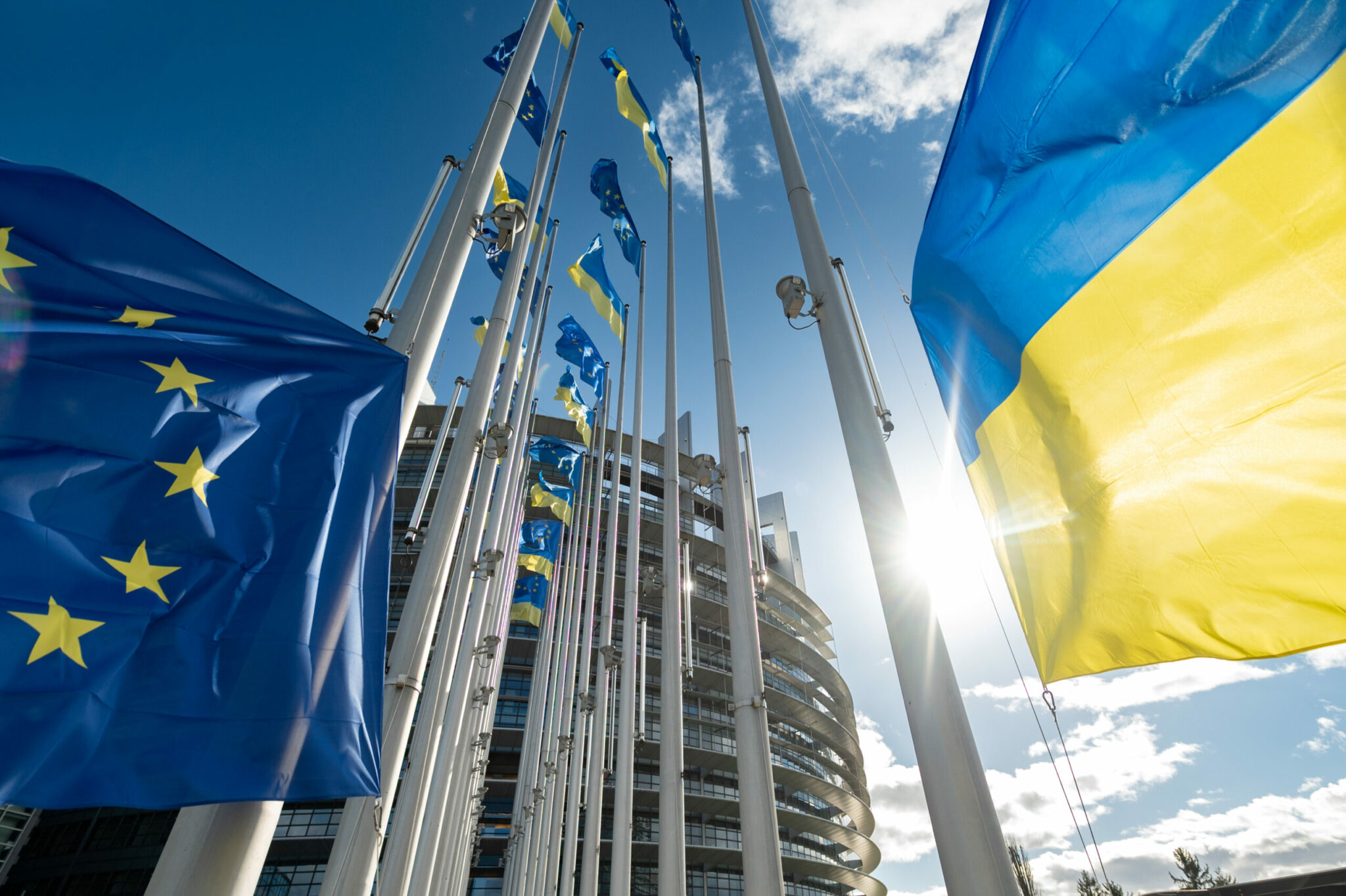Dr. Jonas J. Driedger (Goethe University Frankfurt)
European Commission officials are currently preparing a proposal to support Ukraine through future profits from Russian state funds that are frozen on EU accounts. Despite some legal and political concerns, the officials seem confident and EU leaders will discuss the proposal at the European Council to be held today (21 March).
Hence the question: provided an agreement on the proposal will actually materialize, will it make a difference for Ukraine and the ongoing war?
The sheer volume of the projected proceeds – 15 to 20 billion Euros from now to the end of 2027 – indicate that they well could.
For context, it took the EU months to agree on a new fund to reimburse member states’ military aid to Ukraine. This fund, while sizeable, only amounts to five billion Euros – about a third of the projected proceeds. Furthermore, profits generated from Russian state funds would add an additional third of funds to the recently agreed EU help package for Ukraine that amounts to a hefty 50 billion Euros over the same period of time.
Timing is crucial, too. The sinews of war are money and Ukraine needs money now more than ever. Kyiv’s offensives of 2023 were largely unsuccessful. Ukraine’s economy is struggling. Meanwhile, Russia has solidified its positions, ramped up arms production, and is apparently preparing a major offensive for the summer.
Thus, Ukraine is very much on the backfoot in 2024, and this situation might well worsen in upcoming years. Underpinning this grim outlook are the issues of people and ammunitions.
As the two countries have a similar demographic structure, for every person living in Ukraine, there are more than three living persons in Russia, granting Moscow a vast lead in the infantry-heavy land war that the two countries are fighting.
While Ukrainians are still determined to defend their homeland from Russian aggression and roll back the occupation, they are also tired from two years of continuous large-scale mobilization. Kyiv is thus hesitant to ramp up the intensity of its mandatory drafts.
Russian elites, on the other hand, have long shown an increasing willingness to accept risks and costs in the pursuit of their goals. There are no signs that the fighting spirit of the Russian regime will abate any time soon, as evinced by the weirdly aborted Wagner episode last year, intensive propaganda, careful attention to the sentiments of the Russian populace and an unsurprising if dubious landslide victory of Putin in the recent presidential elections.
The balance of military hardware paints a similarly dark picture. While Ukraine has made serious attempts to ramp up domestic weapons and munitions manufacturing, it is easily outclassed by Russia, which can draw on much greater resources and can rely on most of the infrastructure that once granted the Soviet Union global superpower status.
Meanwhile Ukraine’s Western allies have been struggling to provide sufficient support to give Ukraine a fighting chance. In the United States, Republicans in the House of Representatives continue to block a major aid package for Ukraine and the shadow of a possible re-election of Donald Trump as President looms large over any conversation about the war.
While Germany, France, the United Kingdom and others have recently signed security agreements with Ukraine, doubts remain. For example, Germany promised seven billion Euros in military aid for 2024 – but added an explicit caveat that this would depend on sufficient consensus in the parliament, which, apparently, not even German leadership expects to be forthcoming. Oddly, it was not one of the major European powers but that brought together a concerted plan to buy ammunition from third countries to make up for the EU’s lacking production capabilities.
In the face of Ukraine’s many problems and the stuttering support from the West, there are a number of advantages that the EU plan on supporting Ukraine with the profits of Russian state funds would entail.
Aside from granting Ukraine some more reliable flows of desperately needed money in the upcoming years, the policy would signal to Ukraine, Russia, and Europeans that the EU takes supporting Ukraine seriously and is willing to set up long-term policies for it.
This would help to quell hopes in Moscow that Europe will not oppose Russia without strong backing by the United States. As a recent study has shown, the outcomes of crisis interactions between the EU and Russia in the past have largely depended on whether or not EU leaders can come together on clearly defined goals vis-à-vis Russia. The state funds plan could function as a focal point of such goals.
Furthermore, the state funds, and the proceeds therefrom, might well provide a welcome source of leverage and bargaining power for future negotiations between Russia and Ukraine.
It is up to Europe to make these plans a reality.
There might be some prolonged haggling and stalling over what exactly the profits would be spent on. Aside from expectable Hungarian intransigence, other factors could affect this process as well. For example, the policy of neutrality in Ireland might conflict with other member states’ desire to support Ukraine more directly in the military sphere.
However, in the grand scheme of things, this aid need not necessarily be spent directly on military matters, as Ukraine cannot wage war without keeping its state, economy, and society functioning. If Ukraine can use external funds for civilian purposes, it can free up resources for the war effort. However, there is a distinct danger that haggling in Brussels over the exact purpose of the funds might bring about a situation where Ukraine receives none of the profits anytime soon.
Dr. Jonas J. Driedger is Interim Professor for International Security at Goethe University Frankfurt. A researcher, consultant and an analyst of security, defense and foreign policy with an emphasis on Germany, Russia, Eastern Europe, EU and NATO.
The views expressed in this blog post are the position of the author and not necessarily those of the Brexit Institute blog.



